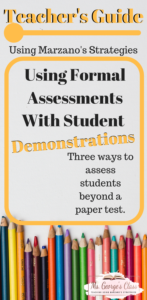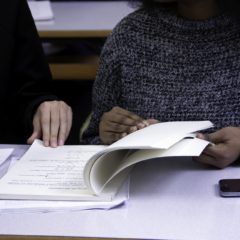Education has changed since I was in school. In the nineties, all my formal assessments were tests and quizzes.  Now, in the 21st century, students must show their understanding within all academic disciplines. One great strategy is to have students demonstrate their work.
Now, in the 21st century, students must show their understanding within all academic disciplines. One great strategy is to have students demonstrate their work.
- Show their skill level– Students can demonstrate their level of understanding of a skill that was taught within your class. For example, recently, my students completed a close reading passage over three texts. The final assessment was a synthesis question, and they demonstrated they can locate a text similar to the one they read, reflect on the human condition or aging process, analyze the author’s purpose of imagery, and connect it to the close reading passages. In this manner, students demonstrated they can do all tasks and appropriately explain each step.
- Explain strategies– In poetry, we use a strategy named TP-CASTT. “The Dayton Way” (which was discussed in another post), consists of “I do, We do, and You do!” The teacher is to teach a mini lesson over the topic, then students are to work together to analyze a poem, and finally students are to work independently. The TP-CASTT strategy is a great assessment after the poetry lesson. Students applied their understanding of the text after completing each letter of the acronym.

- Demonstrate the process– This is great for math and science. What is the process for finding x? What is the process of mitosis? In language arts, the process could be the stages of writing. Students want to write without brainstorming or revising their paper. However, a well-written paper takes time for beginning writers, who lack background experience or have limited textual evidence. Have students show how they produced the answer or the steps they completed to get the finished product.
How do you use student demonstrations within your class? Do they have to show their skill, strategies they used, or the process to get the finished work? Comment below.




Leave a Reply